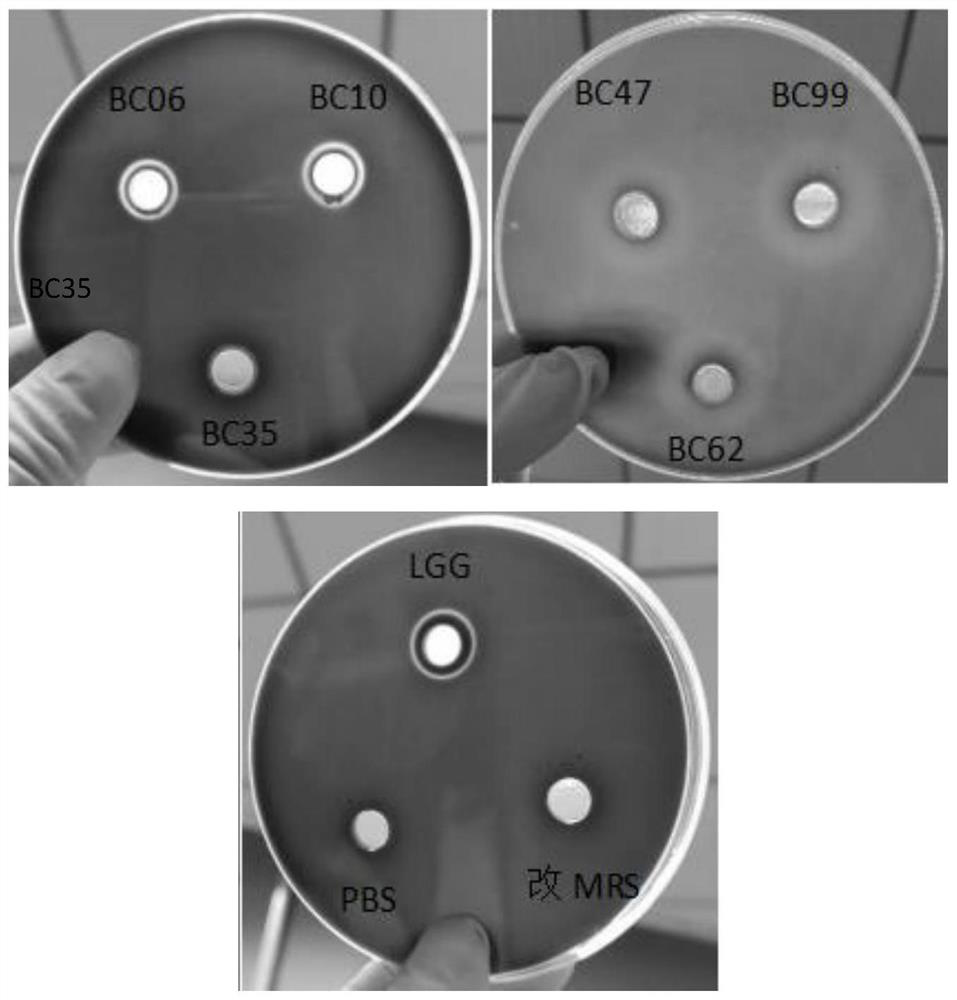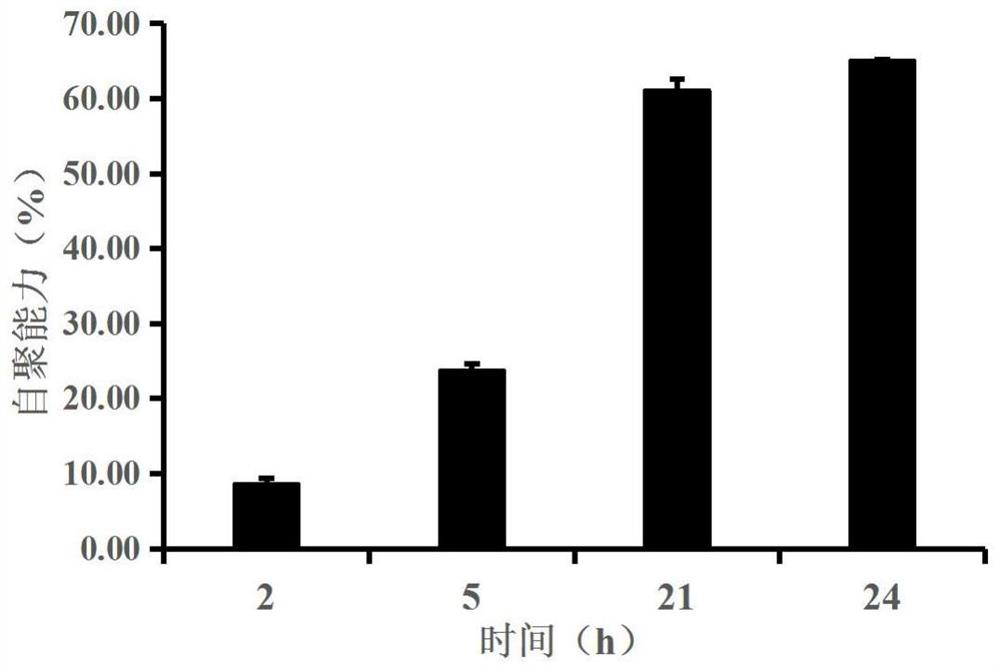Anti-helicobacter pylori bacillus coagulans BC99 and application thereof
A Bacillus coagulans, anti-Helicobacter pylori technology, applied in the field of microbiology, can solve the problems of affecting the normal life of patients, poor treatment compliance, and the production of drug-resistant strains, etc., to achieve strong pathogenic bacteria removal ability, reduce growth, strong gastric acid resistance The effect of bile salt capacity
- Summary
- Abstract
- Description
- Claims
- Application Information
AI Technical Summary
Problems solved by technology
Method used
Image
Examples
Embodiment 1
[0033] Example 1 Detection of the ability of Bacillus coagulans BC99 to inhibit Helicobacter pylori
[0034] Experiment of Bacillus coagulans BC99 inhibiting Helicobacter pylori: Cool the mixed solid medium of Columbia and BHI to about 55°C, add 5ml of sterile defibrillated sheep blood to 100ml of medium, mix well, and then take 10 9Add 1 ml of CFU / ml Helicobacter pylori suspension to the above-mentioned mixed medium, shake evenly to avoid bubbles, and make the number of viable pathogenic bacteria in the system within 10 7 CFU / mL order of magnitude, and then quickly poured into the plate pre-placed in the Oxford cup. After the medium was cooled and solidified, the Oxford cup was taken out, and 200 μL of 10 was injected into each well. 8 CFU / ml Bacillus coagulans suspension, and set Lactobacillus rhamnosus LGG as control, set PBS and modified MRS liquid medium as blank control, lightly cover the plate and place it in a three-gas incubator at 37°C for 2 ~3 days, and use a verni...
Embodiment 2
[0039] Example 2 Detection of Bacillus coagulans BC99 inhibiting Helicobacter pylori urease activity
[0040] Resuspend the cultured Helicobacter pylori with PBS twice, adjust the concentration of Helicobacter pylori to 1x10 with BHI 8 CFU / mL. In a 96-well plate, 40 μL of Helicobacter pylori and 10 μL of Bacillus coagulans BC99 fermentation supernatant were taken and cultured in a three-gas incubator for 24 h. Then take out and add 150 μL of urease test solution, shake with an OD550nm microplate reader, and measure the absorbance value. The blank group was urease indicator, and the control group was BHI medium.
[0041] Urease indicator: 0.9%NaCl, 20mmol / L urea, 14ug / mL phenol red. The pH was adjusted to 6.8 with HCl, and the density value at OD550nm was measured with a spectrophotometer.
[0042] The result is as figure 2 It is shown that the Bacillus coagulans BC99 fermentation supernatant can effectively reduce the activity of Helicobacter pylori urease, thereby contr...
Embodiment 3
[0043] Example 3 Self-polymerization and copolymerization ability of Bacillus coagulans BC99 with Helicobacter pylori
[0044] 1. Self-aggregation ability: Centrifuge the cultured Bacillus coagulans BC99 bacterial solution, collect the bacterial cells, rinse with PBS buffer twice, resuspend with PBS, and adjust the OD600 to 0.6. Take 40mL of cell suspension into a 50mL centrifuge tube, vortex to mix well, and then incubate at 37°C. After the bacterial suspension is incubated for 2h, 5h, 21h, and 24h, carefully aspirate 2.5mL of the upper bacterial solution, and measure the bacteria. The absorbance value OD of the suspension at 600nm was used to calculate the self-cohesion of the strain. Self-cohesion %=1-(A t / A o ), where A o = initial absorbance value, A t = absorbance value at the time of sampling.
[0045] 2. Copolymerization ability: Bacillus coagulans was inoculated into MRS liquid medium at 3% of the inoculation amount, and cultured at 37° C. for 24 hours, and the ...
PUM
 Login to View More
Login to View More Abstract
Description
Claims
Application Information
 Login to View More
Login to View More - R&D
- Intellectual Property
- Life Sciences
- Materials
- Tech Scout
- Unparalleled Data Quality
- Higher Quality Content
- 60% Fewer Hallucinations
Browse by: Latest US Patents, China's latest patents, Technical Efficacy Thesaurus, Application Domain, Technology Topic, Popular Technical Reports.
© 2025 PatSnap. All rights reserved.Legal|Privacy policy|Modern Slavery Act Transparency Statement|Sitemap|About US| Contact US: help@patsnap.com



